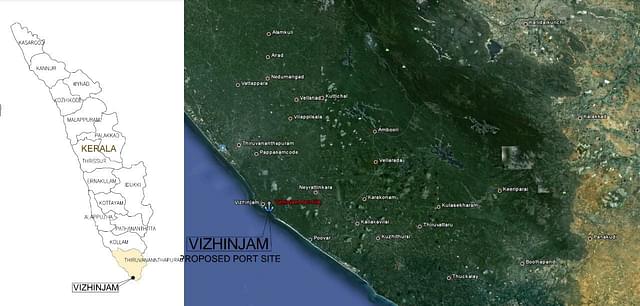With the arrival of the inaugural ship at the forthcoming Vizhinjam International Seaport, a heightened focus is now on improving the road connectivity between the port and National Highway 66 (NH 66).
The Adani Group, serving as the concessionaire for the project, is poised to unveil detailed plans for the proposed quarter-trumpet connection road, linking the access road to NH 66 near Mukkola, to the National Highways Authority of India (NHAI) for its final endorsement within the next ten days.
Once NHAI grants approval, the company will initiate the tender process for the construction of this vital access road. Three months ago, initial approval was granted for the design of the connection road, and now, it’s advancing towards realisation.
To mitigate traffic congestion at the junction where the port road intersects with NH 66, the Adani Group has proposed a quarter-trumpet-shaped road design.
Following the final approval, construction is anticipated to commence in a matter of two to three months. It’s noteworthy that the Adani Group will be the sole financier of this project, with an estimated budget ranging between Rs 80 to Rs 100 crore.
NHAI’s final endorsement will be contingent on compliance with the standards set forth by the Indian Road Congress.
Simultaneously, the district administration is overseeing the land acquisition process, a crucial component of the project.
The undertaking involves the construction of a two-kilometre, four-lane road that will seamlessly connect the port to NH-66, as per The New Indian Express report.
While two bridges along this route have already been completed, the approach road remains under construction and requires a specialised design to alleviate potential traffic bottlenecks at NH 66, especially given the accessibility of the Mukkola-Karode road. Additionally, this road will enable port vehicles to access the proposed outer ring road and NH 66.
The primary goal of this project is to enhance connectivity within the port area, ensuring efficient movement of trucks and heavy vehicles.
The project is set to be implemented within the Mulloor ward, which falls under the jurisdiction of the Thiruvananthapuram corporation.
Vizhinjam Port Project
Most of India’s container traffic business is currently handled by transhipment hub ports such as Colombo, Singapore, Salalah (Oman), Jebel Ali (DP World’s flagship port in Dubai), and Tanjung Pelepas and Port Klang (Malaysia).
While India, with a coastline of about 8,000 km dotted with over 200 ports (including 13 major ports), most of them are of shallow depth, ranging from just nine metres to 11 metres, and cannot accommodate the kind of massive ships that are now a standard feature of transnational trade.
The biggest ships linking Europe and the Far East cannot dock at any Indian port. India lacks container transhipment infrastructure capable of servicing them. Only a handful of ports, including Mumbai, Mundra, Kochi/Vallarpadam, Chennai and Visakhapatnam have container handling facilities.
It is in this context that Vizhinjam port assumes huge significance.
Vizhinjam, located about 14 km from Kerala’s capital city of Trivandrum, has a natural depth of over 18 m and is located hardly ten nautical miles (18 km) from the international shipping route from West Asia, Africa and Europe to the far eastern regions of the world.
Additionally, the availability of a 20-metre contour within one nautical mile from the coast, minimal littoral drift along the coast, the natural depth that excludes the need for maintenance dredging, potential for better road, and rail transport link potential make Vizhinjam a strategic well-suited for the greenfield project.

Vizhinjam is envisaged to be an all-weather, multipurpose, deepwater, mechanised, greenfield port that seeks to garner the lion’s share of the Indian transhipment cargo now being handled by the nearby foreign ports and emerge as the future transhipment hub of the country.


